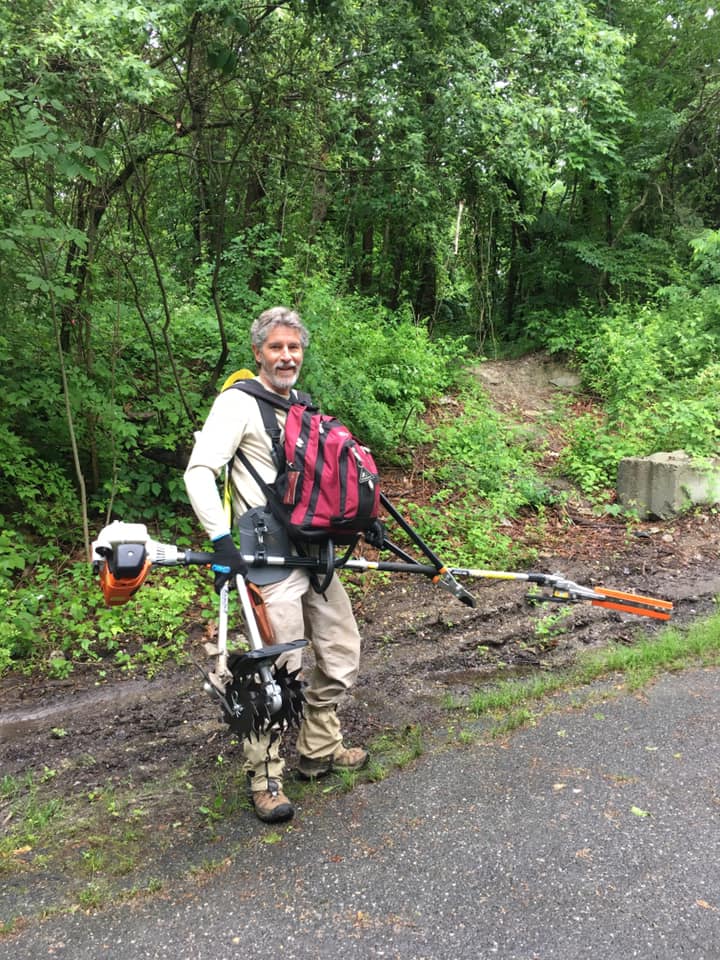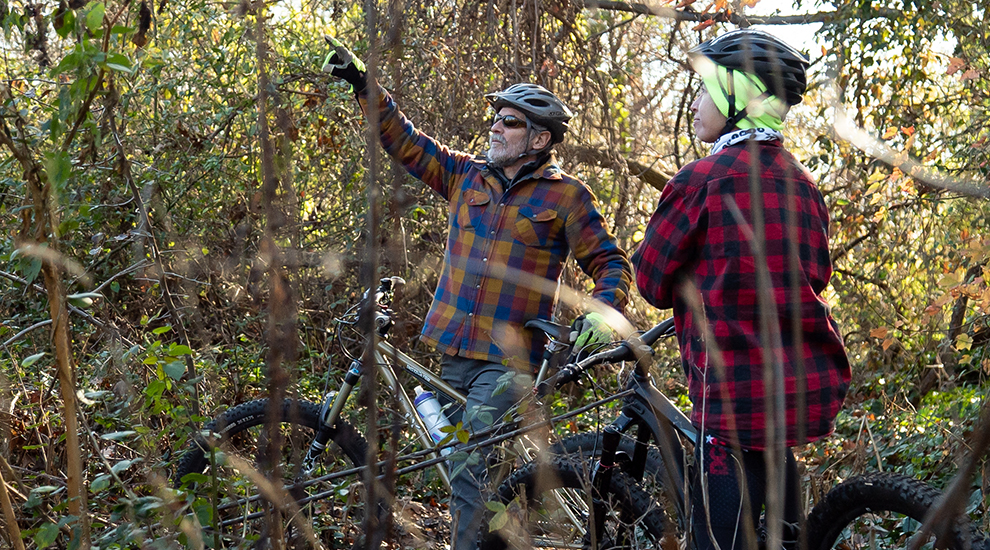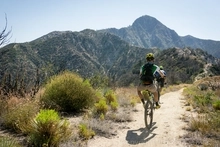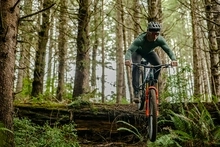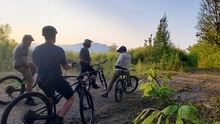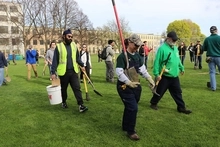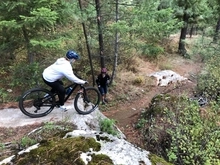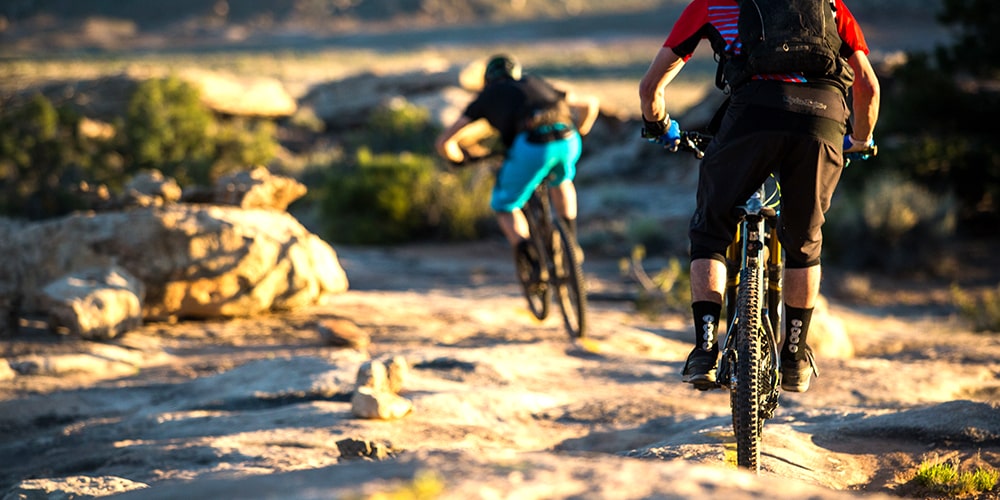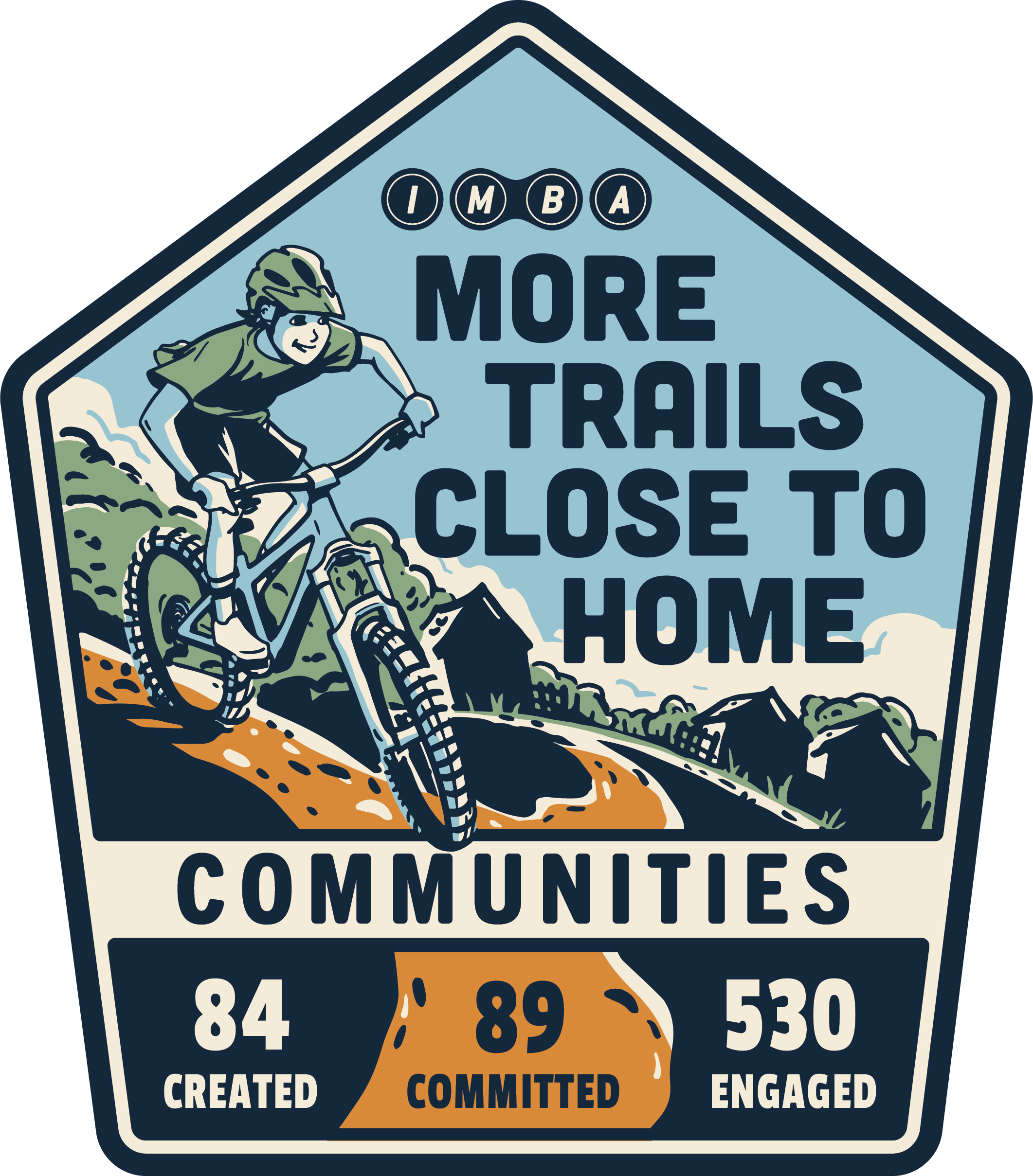Ten Years, Five Big Wins, Thousands of Mountain Bike Advocates
What is the definition of a trail champion? These select few are leaders in their community who have bestowed their knowledge, influence, and passion into advocating for the best local trails on the ground.
We are celebrating these trail champions through a Q&A style blog series. These local leaders have been nominated by members of their communities and have agreed to share insights into their success.
Meet trail champion, Michael Vitti, President of the Concerned Long Island Mountain Bicyclists (CLIMB) in New York.
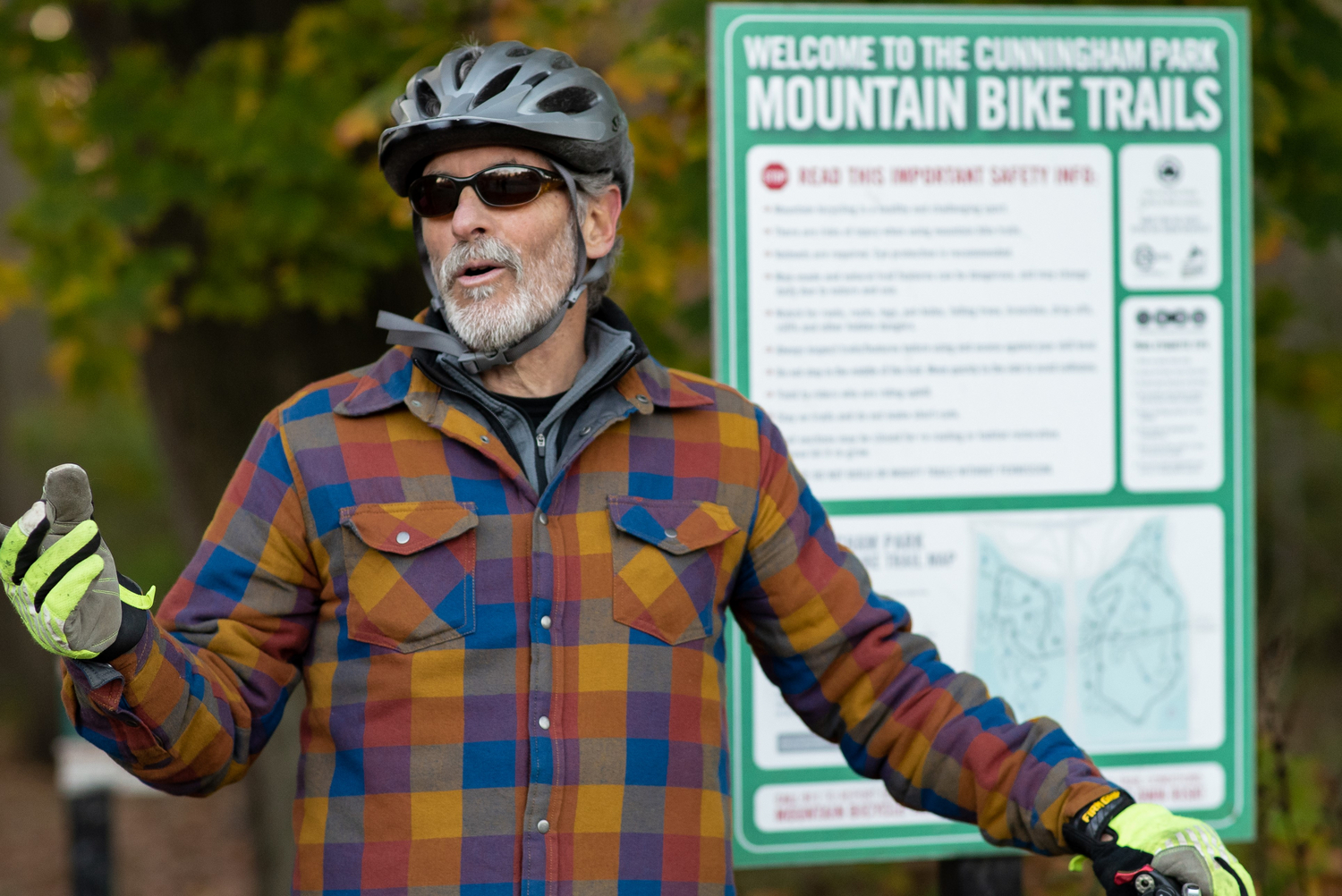
IMBA: Tell us about yourself - why do you love mountain biking?
Michael: I bought my first mountain bike around 1982, it was a Ross Mount Hood which I still have and ride it a few times a year.
I remember saying to my friends “Why are we buying mountain bikes? There are no mountains around here,” but I thought it was a good idea for cross training to stay in shape in between surf sessions. Yes, Long Island gets world class waves and I soon found out that I loved surfing single track on my bike.
Unlike surfing however I saw there was a nice sense of community with mountain bikers, there was no “locals only” vibe. We rode mostly old equestrian and hiking trails that had bad erosion problems happening on the trails, which the hikers blamed on mountain bikers. My friends from high school started a club called CLIMB (Concerned Long Island Mountain Bicyclists). They had the IMBA Trail Care Crew come visit a few times to teach us how to design, fix and maintain trails, they introduced us to the concept of sustainable trail design. I was hooked!
With this knowledge I knew I could fix all these problems because I had a background in Landscape Design and Construction. I started going to the IMBA Summits not only to learn more about sustainable trails design and maintenance but to ride trails in awesome places like Whistler, Park City, the Smokey Mountains etc. Now the hikers ask us for advise on how to fix erosion damage. I enjoy traveling to visit family who live in epic places like Colorado, California and Australia to mountain bike, hike and surf.
IMBA: What partnerships have been the most successful for you in creating more trails in your area?
Michael: I am the state representative on the NY State Trails Council so I also help with mountain bike advocacy on a statewide level. By representing mountain bikers interests on this state level we are allowed input when policies and recreational plans were being developed for New York State.
The hiking clubs were actually our best partnerships because they had been building/maintaining trails in our area the longest and they could prevent us from getting more trails so we became friends with them first. I actually became a board member of one of the hiking clubs in the NYC tri-state area and walked in to the lion’s den so to speak. I took a lot of heat but eventually made friends and influenced some people. We collaborated in selecting areas that they had little interest in. They agreed not to oppose our mutually agreed upon projects. They taught us how to work through the governmental red tape which worked in their best interest because by helping us get our own trails, it kept mountain bikers off their most precious hiking trails.
The other best partner was IMBA because they offered training in sustainable trails design but also how to talk to local governmental agencies. The various civic organizations have also helped with support for our projects. The local Student Conservation Association helped us tremendously when trails in NYC and the Hudson Valley were being built due to the lack of a volunteer base in areas that didn’t have an established mountain bike club yet. The NY State trails council representing mountain bikers interests which allowed input when policies and recreational plans were being developed for New York State.
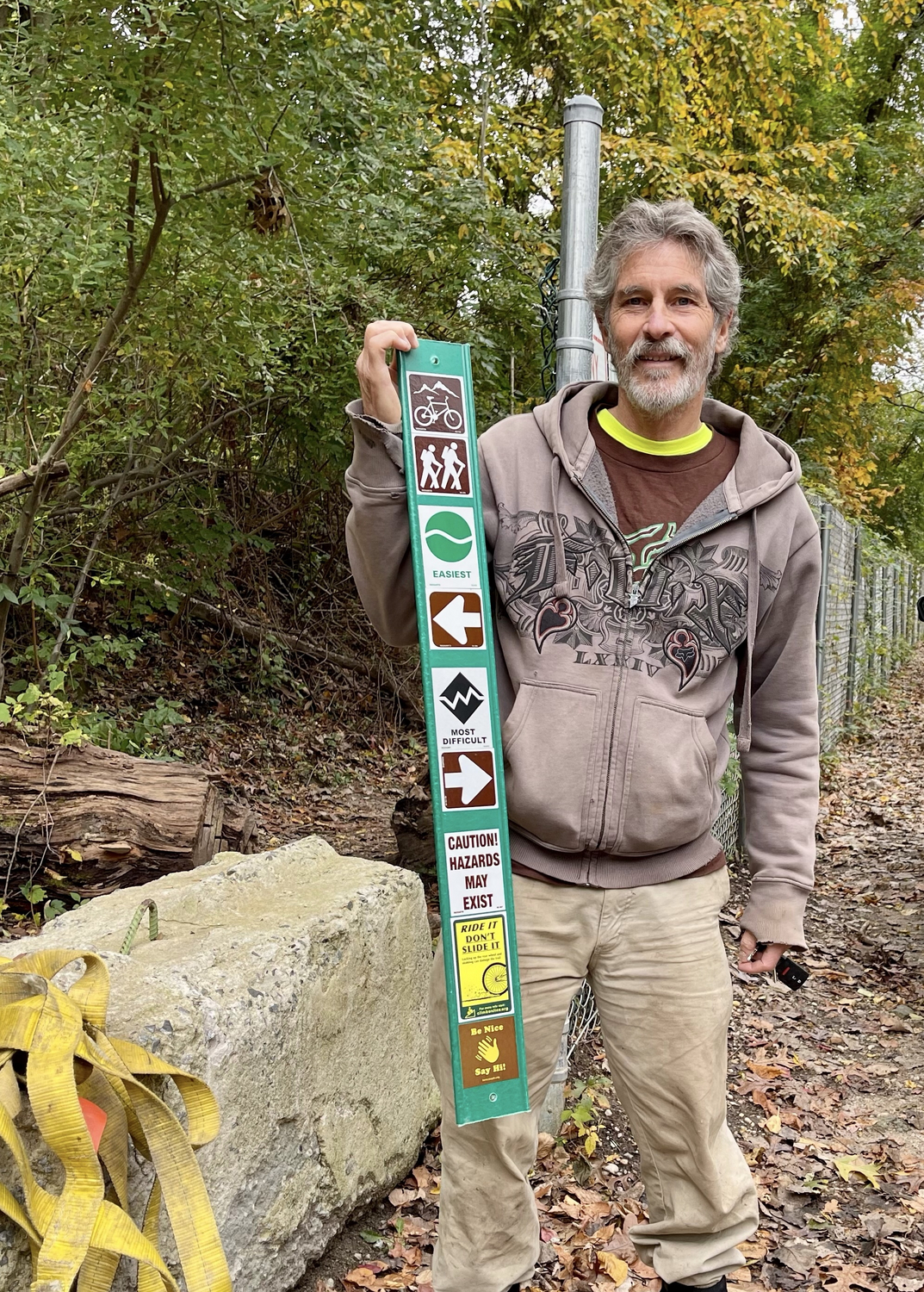
IMBA: What resources have you found most helpful in guiding the trail vision you have for your community?
Michael: To have a big vision you need back up. Volunteers are our biggest and best resource. We will have the confidence to seek more trails if we have a big community of volunteers behind us ready to support our events and trail projects.
Your existing trails need to be in good shape before you seek out more trails or you can stretch your resources thin. Then just keep improving and make everything better every year or two. Other clubs are now using paid trail crews and that’s great but that’s not available to most small clubs.
Long Island is 120 miles long and about 30 miles wide and there are about 6.5 million people living here. We didn’t like putting our bikes in our cars and driving an hour or more to ride our bikes. How do we drive less to ride more? In early 2001, we created a goal called VISION 20/20 where we wanted at least 20 miles of trails within a 20 minute drive from any community on Long Island by the year 2020. In 2019 we accomplished that goal, we did that because our members in the mountain biking community shared that goal.
We now have over 200 miles of trails from NYC to Montauk Point and two BMX skills development areas. We also have a great relationships with the other local clubs bigger than us like NEMBA, VMBA and JORBA so we could network with and get advise etc. We used to have regional meetings in person, go riding etc but now we meet virtually which is not the same.
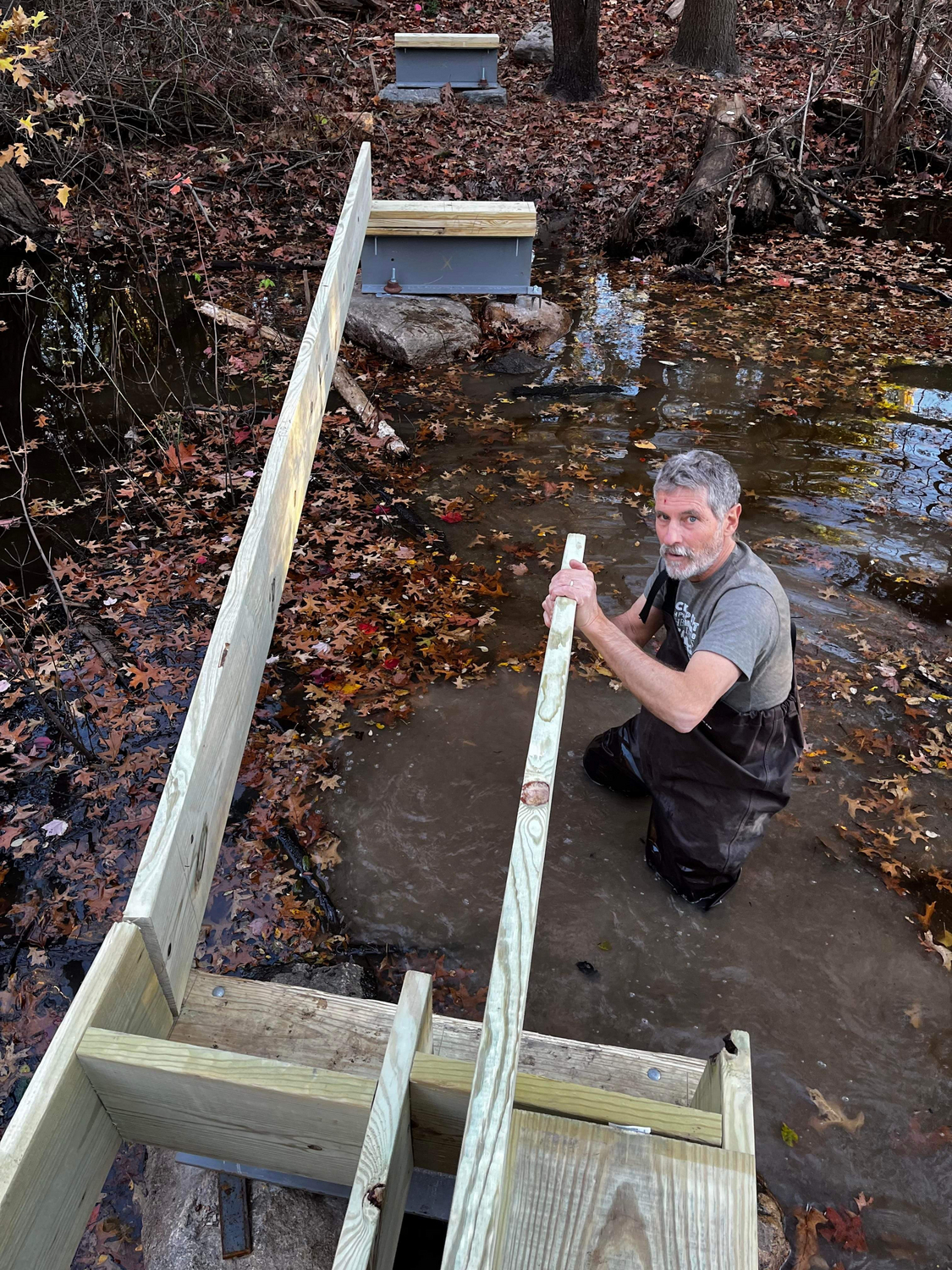
IMBA: What advice would you give to communities that want to see more trails near them?
Michael: Look for diamonds in the rough, we had our best successes by being handed lemons and making lemonade. Parks that had crack, heroin and prostitution as their main user groups. Parks that had the worst motorized use problems I've ever seen. Parks that were used for mining then became dumps before it was turned into a park. Parks that were once rehab centers for veterans with phycological problems from world wars that were torn down and made into a park.
We have taken these parcels filled with negative activity and created exciting trail systems that are purpose built for mountain bicycling that people love. When you bring in a positive recreational use the negative uses diminish. We have built over 175 miles of trails across Long Island without a mountain in sight but through limitations comes creativity. We try to make each trail system different from the others by playing off the significant features or micro topography that makes each place unique.
Don’t think you need any high tech presentations either because I have never made a power point presentation to get any trail approved so far. Start with a feasibility study to determine if the local community and the land managers are interested and proceed from there. You’re building a trail but you are also building a community of caretakers for the park.
Don’t get discouraged if there are objections just come up with creative solutions. Some trails systems get approved in 2-3 years, most take 4-5 years but I’ve had some take 20 years so have a few pots on the stove. I also found that reading books on win-win type of negotiating skills helped tremendously. I heard someone in the hiking club say that "Michael Vitti could sell horse manure to a pig farmer" so I took that as a compliment.
IMBA: People forget that trails don’t just fall from the sky. What support do you wish you had when you were starting this work?
Michael: We should have promoted our club more.
We were happy to just ride the trails and not care if anyone else knew who was responsible for the trails. Now we have a banner at our most popular trailheads asking people to donate money or muscle.
In the beginning we weren’t very aggressive about getting local businesses to sponsor our club either but “more trails equals more sales” and now we pull in lots of funds from local sponsors including microbreweries. In our area governmental agencies, politicians etc didn’t value our trails or our organization as much as they should have. We got little to no funding from them for trail projects. They thought we were just some crazy yahoos in the woods.
Sometimes when we went to meetings and the politicians asked us how much we charge to use the trails when we tell them they are free they seemed dis-interested. If they perceived a value from the beginning we would have had access to funding for better trailhead facilities etc.
Now due to the boom in trail use due to COVID-19, they are thankful we had the forethought to make the best trails we could. The Trailforks app has been great for us with the “trail karma” button feature we get dollars donated to our club, we didn’t have apps when we started way back then.

IMBA: There is often trepidation around trails. How have you energized your community around a vision for more trails?
Michael: I have been helping develop trails in areas just outside our region in NYC and the lower Hudson Valley. Nowadays the land manager or town will hold visioning sessions about the possible uses for parcels of land and it’s important to mobilize the mountain bike enthusiasts to show up to these meetings. The world is run by people who show up and the people who don’t want mountain bikes will always show up.
At the meetings you will find what i call the local spark plugs. These are the people who live nearby and are willing to help see the project through to it’s fruition if not, I let them know it will die on the vine. It will be a multi year project just to get the approval so you will need to keep everyone motivated by cultivating small wins along the way. Not many people will have the patience to go the distance on long drawn out trail approval projects which is why we try to have a additional spark plugs. We usually only give updates to the general membership when the trail building is about to begin or they will hit us with negative waves and criticism.
On the land managers side you need to re-assure them of your commitment to make their jobs easier. In our area the maintenance requirements for single track trails are a minimum of 20 hours per mile per season. This is the value we are offering. We can create an amenity that they wouldn’t normally be able to provide due to budget constraints. We also clean trash, report illegal activity and remove graffiti. This makes the land managers look great because they are providing more services for the public using less resources.
IMBA: We know that Trail Champions don’t work alone. Who’s on your team for more trails?
Michael: I owe a lot of gratitude towards all our members and sponsors that allow us to pay our expenses. We are all volunteers with no paid staff. We have a small army of dedicated volunteers that make great things happen. It's what keeps our gears lubricated. Our board members keep the wheels turning and steer our organization towards more and better trails/events. We have a vice president for each region on Long Island. Our essential volunteers include a membership person, eNews person and webmaster. We have pro bono lawyers and accountants helping us out. We have a trail ambassador program and a trail patrol. Each park/preserve has a trail steward and maintenance crew. We have a dedicated BMX group that create our pump tracks and dirt jump areas. Our ride leaders/sweeps and grill masters help create community, welcoming new riders through guided rides, food and camaraderie. Our sponsorship and events people are super dedicated in making sure our events are free and open to all. Everyone is invited and included. Did I mention we have three micro brewery sponsors? Our policy for our volunteers is that family and work come first, we don’t want anyone creating a stressful situation at home so we understand if someone needs a break. I love that we have events that are not dependent on me showing up because if the surf’s up I want to be able to go surfing!
